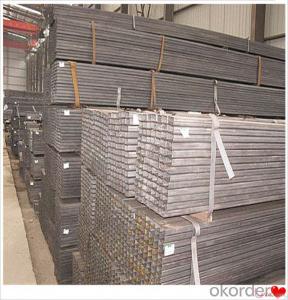Hot Rolled Steel Billet Q235 Q275 Q345 for Ceramic Tunnel Kiln
- Loading Port:
- Dalian
- Payment Terms:
- TT OR LC
- Min Order Qty:
- 100 m.t.
- Supply Capability:
- 50000 m.t./month
OKorder Service Pledge
OKorder Financial Service
You Might Also Like
Hot Rolled Steel Billet Q235 Q275 Q345 for Ceramic Tunnel Kiln
Description
Reference Price:$260/ton Mn 0.3%-0.6%
Rectangular billet continuous casting billet and mainly general carbon steel, low carbon low silicon cold-rolled material, high quality carbon structural steel, high strength low alloy steel, special steel, etc.
The billet is mainly divided into two kinds from the shape:
Slab: cross section width and height of the ratio of the larger, mainly used for rolling plate.
Billet: equal cross section width and height, or a huge difference, mainly used for rolling steel, wire rod. ,
Steel billets have distinct characteristics as compared with already furnished steel bars and products. Billets have a specific grain structure, which enables the metal to be processed more intricately. Steel billets are also known for their malleability and ductility, especially when exposed to varying temperatures during shaping and molding.
Processing of Steel Billet
Steel billets are considered fresh and raw, and they must undergo a series of manufacturing processes before they can be used for various purposes. Billets are made by means of freezing molten liquid, and are later exposed to extremely low temperatures in order to allow the metal to take shape and solidify in chemical structure. The temperature manipulates the metal's physical properties, and tones its strength and durability. The subsequent processes provide the metal's curved mold design so that it can fit the allotted space provided by other machines, which complete the finishing procedures.
Images
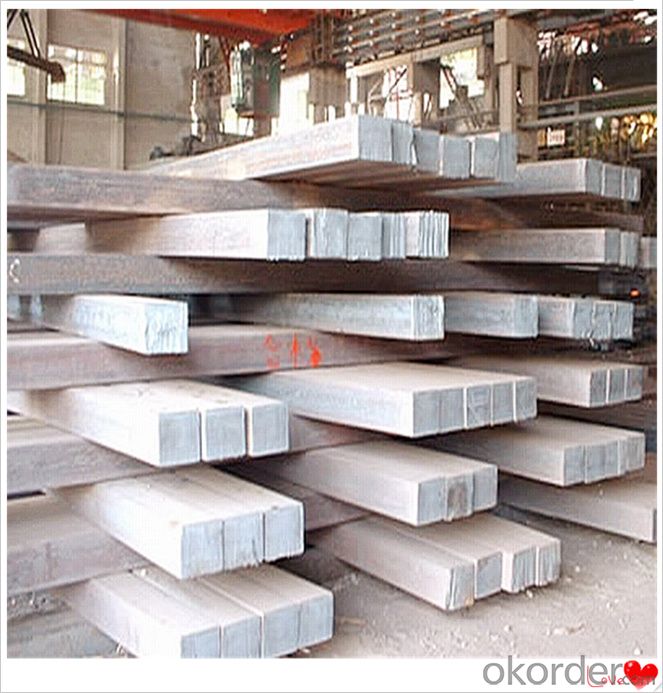
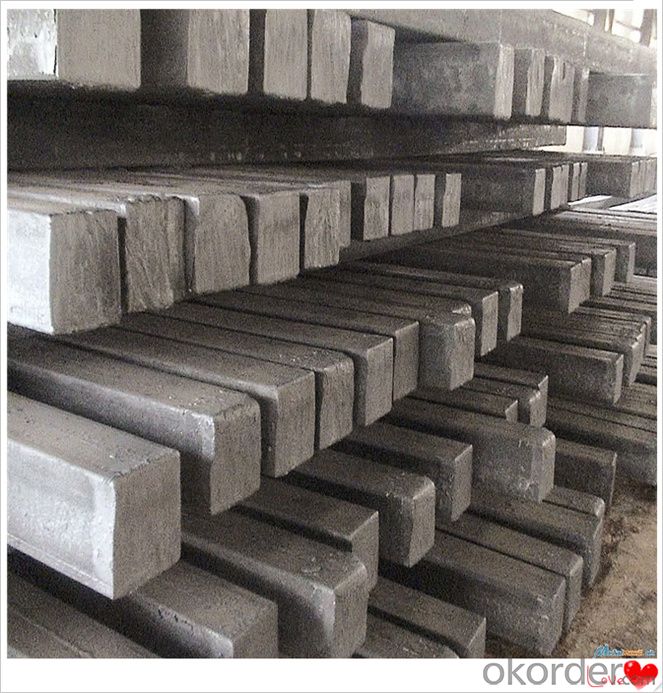
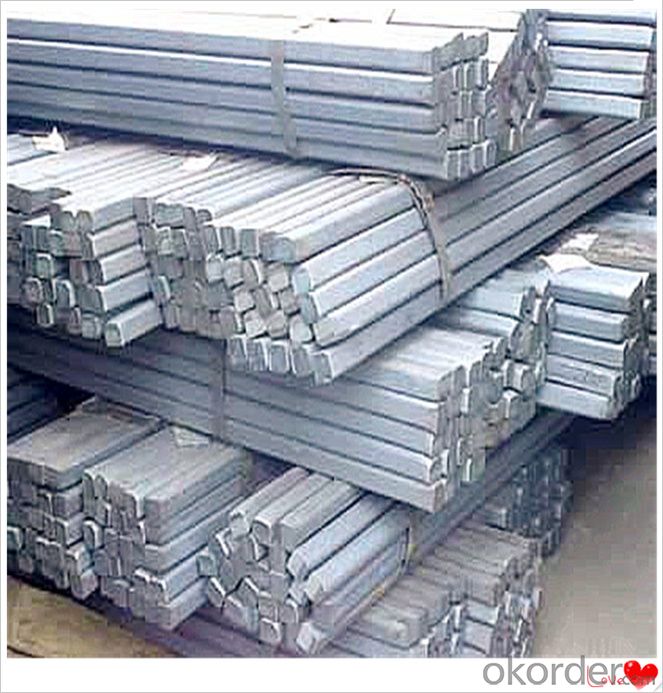
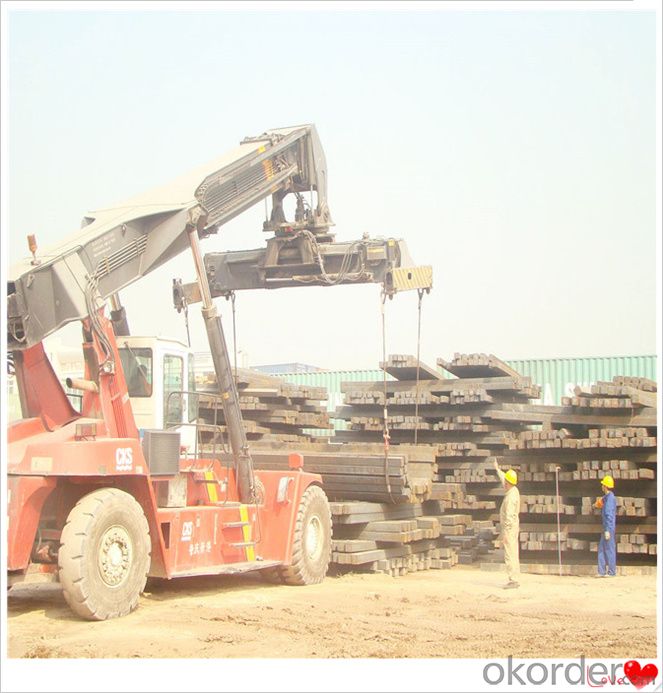
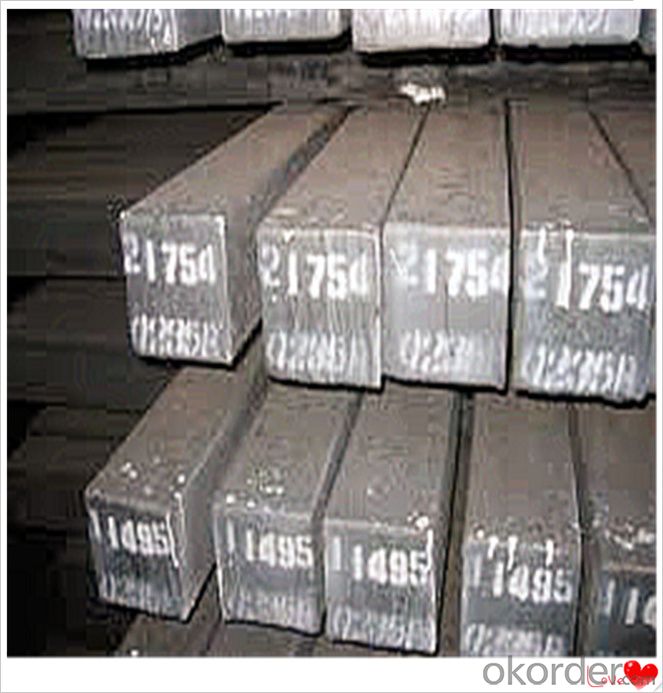
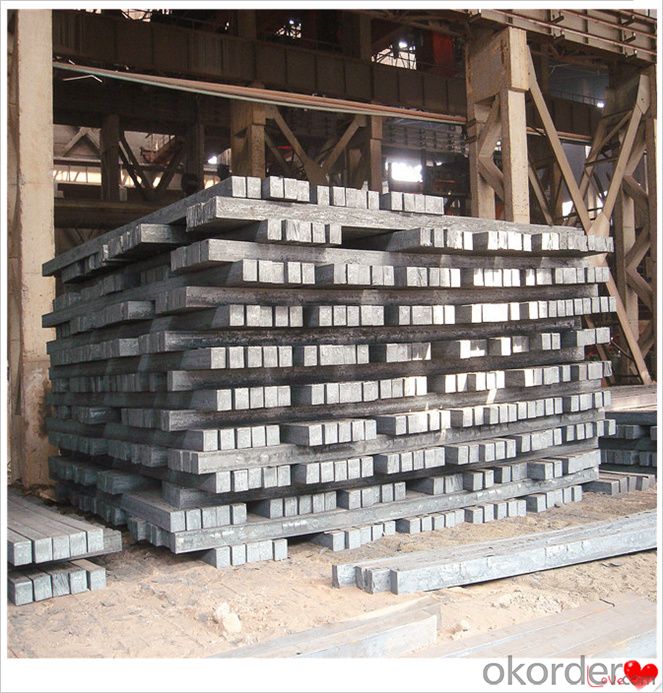
Technical Data
Size:100*100,120*120,150*150,130*130
Mn: 0.3%-0.6%
C: 1%
Cr:0.1%
Packaging
cargo ship or container
usually container price will add 15USD per ton
RFQ
We have organized several common questions for our clients,may help you sincerely:
1) How about your company?
A world class manufacturer & supplier of castings forging in carbon steel and alloy steel,is one of the large-scale professional investment casting production bases in China,consisting of both casting foundry forging and machining factory. Annually more than 8000 tons Precision casting and forging parts are exported to markets in Europe,America and Japan. OEM casting and forging service available according to customer’s requirements.
2) How to guarantee the quality of the products?
We have established the international advanced quality management system,every link from raw material to final product we have strict quality test;We resolutely put an end to unqualified products flowing into the market. At the same time, we will provide necessary follow-up service assurance.
3) How long can we receive the product after purchase?
In the purchase of product within three working days, We will arrange the factory delivery as soon as possible. The pecific time of receiving is related to the state and position of customers.Commonly 7 to 10 working days can be served.
4)Do you have your own QC department?
Yes, we have, our QC department will inspect the goods during the process of mass production and after completion of production.
hot sale!!! steel billets/ mild steel bar/ billet steel
(1): High quality steel with reasonable price.
(2): Wide excellent experiences with after-sale service.
(3): Every process will be checked by responsible QC which insures every product's quality.
(4): Professional packing teams which keep every packing safely.
(5): Trial order can be done in one week.
(6): Samples can be provided as your requirements.
If you are interested in our products, please don't hesitate to contact me.
Your any inquiry will be appreciated and we will offer you a rock-bottom price.
- Q:What are steel billets?
- Steel billets are semi-finished metal products that are rectangular in shape and usually have a square cross-section. They are produced through a process called casting or continuous casting, where liquid steel is poured into molds and allowed to cool and solidify. Once cooled, the billets are typically hot-rolled or forged to give them their final shape and dimensions. Steel billets serve as a raw material for the production of various steel products, such as bars, rods, wires, and structural sections. They are commonly used in the construction industry for structural purposes, as well as in the manufacturing of automotive parts, pipes, and machinery. The quality of steel billets is crucial, as it directly affects the quality and performance of the final steel products. Therefore, they undergo rigorous quality checks and testing to ensure they meet the required standards for strength, durability, and other mechanical properties. Overall, steel billets play a vital role in the steel industry as a primary raw material for the production of a wide range of steel products, making them an essential component in various sectors of the economy.
- Q:What are the different heat treatment processes for steel billets?
- There are several different heat treatment processes that can be used for steel billets, each with its own purpose and benefits. Some of the common heat treatment processes for steel billets include annealing, normalizing, quenching, tempering, and case hardening. 1. Annealing: This process involves heating the steel billets to a high temperature and then slowly cooling them to room temperature. The purpose of annealing is to reduce the hardness of the steel, improve its machinability, and relieve internal stresses. It also helps in refining the grain structure, making the steel more ductile and less brittle. 2. Normalizing: In normalizing, the steel billets are heated to a temperature above the critical range and then cooled in still air. This process is used to refine the grain structure, improve mechanical properties, and enhance machinability. Normalizing also helps in relieving internal stresses and achieving uniformity in microstructure. 3. Quenching: Quenching involves rapidly cooling the steel billets by immersing them in a quenching medium such as oil, water, or brine. This process is designed to harden the steel by transforming the austenite phase into martensite. Quenching results in a hard and brittle steel with improved wear resistance, but it also introduces residual stresses and the potential for cracking. 4. Tempering: After quenching, the steel billets are often tempered to reduce brittleness and improve toughness. Tempering involves reheating the quenched steel to a lower temperature and holding it for a specific period of time. This process helps in relieving stresses, reducing hardness, and improving ductility without sacrificing too much strength. 5. Case Hardening: Case hardening is a process used to increase the surface hardness of steel billets while maintaining a tough and ductile core. There are different methods of case hardening, such as carburizing and nitriding. Carburizing involves introducing carbon into the surface of the steel by heating it in a carbon-rich environment, while nitriding introduces nitrogen to form a hard nitride layer on the surface. These processes enhance wear resistance and extend the lifespan of the steel billets. These heat treatment processes for steel billets offer manufacturers the ability to tailor the properties of the steel to meet specific application requirements. By carefully selecting and implementing the appropriate heat treatment process, the resulting steel billets can exhibit a wide range of mechanical properties, such as hardness, strength, toughness, and wear resistance.
- Q:How do steel billets differ from steel ingots?
- Steel billets and steel ingots, both intermediate forms of steel in the steel manufacturing process, have distinct differences. To begin with, the shape and size of steel billets and steel ingots vary. Steel billets are typically square or rectangular, with a cross-sectional area of roughly 36 square inches. They are long and slim, measuring approximately 6 to 12 inches in width and 1 to 12 feet in length. Conversely, steel ingots are generally larger and possess irregular shapes. Depending on the production method employed, they can be cylindrical, rectangular, or a combination of shapes. Steel ingots tend to be much larger than billets, weighing anywhere from several tons to over 100 tons. Secondly, the production process for steel billets and steel ingots also differs. Steel billets are commonly formed through continuous casting, which involves pouring molten steel into a mold and subsequently cooling and solidifying it to shape the billet. This process ensures a more precise and uniform shape, size, and composition. In contrast, steel ingots are typically produced via ingot casting, where molten steel is poured into a sizable mold and left to solidify. This method is often utilized for larger ingots, allowing for a more adaptable and flexible production process. Lastly, the purpose and usage of steel billets and steel ingots also vary. Steel billets are frequently employed as raw materials for further processing and shaping into various steel products, such as bars, rods, wire, and tubes. They serve as the initial stage in the production of finished steel goods. Conversely, steel ingots are commonly utilized for more specialized applications, such as the production of large steel components, forgings, or specialty alloys. Their larger size and irregular shape make them suitable for demanding applications of this nature. In conclusion, steel billets and steel ingots differ in terms of their shape, size, production process, and usage. While steel billets are slender, square or rectangular, and used as raw material for further processing, steel ingots are larger, possess irregular shapes, and are often employed for specialized applications.
- Q:How do steel billets contribute to energy efficiency?
- Steel billets have a significant impact on energy efficiency in various ways: 1. Enhanced production efficiency: Steel billets serve as the initial form of steel utilized in different manufacturing processes. Employing steel billets as the starting material allows manufacturers to achieve higher production efficiency. The uniform size and shape of billets facilitate easier handling, cutting, and shaping, thereby reducing energy consumption during manufacturing. 2. Optimized resource utilization: Steel billets are commonly produced from recycled steel scrap. By employing recycled steel as the raw material, manufacturers minimize the need for extracting and processing virgin iron ore, a highly energy-intensive procedure. This conservation of natural resources helps in reducing overall energy consumption related to steel production. 3. Efficient heat recovery: The manufacturing of steel billets necessitates high temperatures for melting and shaping the steel. However, modern steel plants are equipped with advanced technologies that enable efficient heat recovery. The excess heat generated during the process can be captured and utilized for various purposes, such as generating steam or heating other areas of the plant. This heat recovery system effectively reduces energy wastage and enhances overall energy efficiency. 4. Employment of energy-efficient equipment: Steel billet production often involves the use of heavy machinery and equipment. Manufacturers are increasingly investing in energy-efficient technologies and equipment to minimize energy consumption. For instance, the utilization of more efficient electric arc furnaces or induction heating systems can significantly reduce energy requirements compared to traditional methods. These technological advancements contribute to the overall energy efficiency of steel billet production. In conclusion, steel billets play a pivotal role in enhancing energy efficiency in the steel industry. Their impact is evident in production efficiency, resource optimization, heat recovery, and the utilization of energy-efficient equipment. By minimizing energy consumption, the use of steel billets promotes a more sustainable steel manufacturing process.
- Q:What is the impact of impurities on the quality of steel billets?
- The presence of impurities in steel billets can significantly impact their quality. Impurities can weaken the structural integrity of the steel, reduce its toughness, and make it more prone to cracking or failure. They can also affect the steel's ability to resist corrosion, resulting in reduced durability and lifespan. Additionally, impurities can interfere with the steel's ability to be machined or welded, limiting its usability in various industries. Therefore, controlling and minimizing impurities in steel billets is crucial to ensure high-quality and reliable end products.
- Q:Charcoal is how to
- The trees cut into sections, lit in a kiln, burning to a certain extent, closed air into the kiln, waste heat to heat water and carbonization of wood, wood tar is leavened, carbonization of wood charcoal as. This is similar to charcoal used in home fires.
- Q:How are steel billets used in the production of power generation equipment?
- Steel billets are used in the production of power generation equipment due to their strength, durability, and versatility. Power generation equipment, such as turbines and generators, require sturdy and reliable components to withstand the harsh operating conditions and provide uninterrupted power supply. Steel billets, which are small, semi-finished steel products, serve as the raw material for manufacturing various parts of power generation equipment. They are typically melted down and cast into specific shapes to create components such as turbine blades, shafts, casings, and rotors. The use of steel billets in power generation equipment ensures high structural integrity, as steel is known for its excellent mechanical properties. It possesses high tensile strength, allowing it to withstand the extreme rotational forces and pressures experienced within turbines and generators. Additionally, steel exhibits good resistance to corrosion and high temperatures, making it ideal for use in power generation equipment that operates in harsh environments. Furthermore, steel billets can be easily machined and welded, allowing for precise manufacturing and assembly of complex parts. This flexibility in shaping and joining steel billets enables the production of customized components tailored to the specific requirements of power generation equipment. In summary, steel billets play a crucial role in the production of power generation equipment by providing a strong, durable, and versatile material for creating various components. Their use ensures the reliability and longevity of power generation equipment, allowing for efficient and uninterrupted power generation.
- Q:What are the common testing methods used for quality control of steel billets?
- There are several common testing methods used for quality control of steel billets. These methods ensure that the billets meet the required specifications and are suitable for further processing. 1. Visual Inspection: This is the initial step in quality control, where the billets are visually inspected for any surface defects such as cracks, seams, or discontinuities. 2. Dimensional Inspection: Billets are measured using various instruments to ensure they meet the specified length, width, and thickness requirements. 3. Ultrasonic Testing (UT): This non-destructive testing method uses high-frequency sound waves to detect internal defects in the billets. UT can identify defects such as inclusions, voids, or cracks that are not visible to the naked eye. 4. Magnetic Particle Inspection (MPI): This method involves magnetizing the billets and applying iron particles to detect surface and near-surface defects. Any defects will cause the particles to gather, indicating the presence of a defect. 5. Dye Penetrant Inspection (DPI): It involves applying a liquid dye to the surface of the billets, which seeps into any surface cracks or defects. After a certain time, excess dye is removed, and a developer is applied to make the defects visible. 6. Hardness Testing: This method measures the hardness of the billets using various techniques like Rockwell, Brinell, or Vickers hardness testing. It helps determine the billet's strength and resistance to deformation. 7. Chemical Analysis: Chemical composition analysis is conducted to ensure that the steel billets meet the required chemical specifications. This is done using spectroscopic techniques like Optical Emission Spectroscopy or X-Ray Fluorescence. 8. Microstructure Examination: A microscopic examination is performed to study the microstructure of the steel billets. It helps determine the grain size, presence of inclusions, and overall quality of the steel. By employing these testing methods, manufacturers can ensure the quality and reliability of steel billets, which in turn guarantees the safety and performance of the final steel products.
- Q:Can steel billets be used in the production of electrical appliances?
- Yes, steel billets can be used in the production of electrical appliances. Steel billets are semi-finished products that are typically used to produce various steel products, including electrical appliances. The steel billets can be further processed and shaped into different components required for electrical appliances, such as casings, frames, brackets, and other structural parts. The use of steel provides strength, durability, and corrosion resistance, making it suitable for the demanding requirements of electrical appliances. Additionally, steel is a widely available and cost-effective material, making it a preferred choice for manufacturing electrical appliances.
- Q:How are steel billets used in the production of railway wheels?
- Steel billets are used in the production of railway wheels by being heated and then forged into the desired shape. This process helps to create a strong and durable wheel that is capable of withstanding the heavy loads and constant use in railway systems.
1. Manufacturer Overview |
|
|---|---|
| Location | |
| Year Established | |
| Annual Output Value | |
| Main Markets | |
| Company Certifications | |
2. Manufacturer Certificates |
|
|---|---|
| a) Certification Name | |
| Range | |
| Reference | |
| Validity Period | |
3. Manufacturer Capability |
|
|---|---|
| a)Trade Capacity | |
| Nearest Port | |
| Export Percentage | |
| No.of Employees in Trade Department | |
| Language Spoken: | |
| b)Factory Information | |
| Factory Size: | |
| No. of Production Lines | |
| Contract Manufacturing | |
| Product Price Range | |
Send your message to us
Hot Rolled Steel Billet Q235 Q275 Q345 for Ceramic Tunnel Kiln
- Loading Port:
- Dalian
- Payment Terms:
- TT OR LC
- Min Order Qty:
- 100 m.t.
- Supply Capability:
- 50000 m.t./month
OKorder Service Pledge
OKorder Financial Service
Similar products
New products
Hot products
Related keywords
